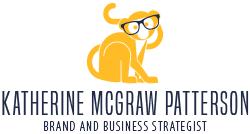I have clients ask me all the time “should I offer a discount?,” and my answer is generally “no.”
Yes, discounts can drive sales, but they can also attract…wait for it…discount shoppers. And, while I myself enjoy a good sale, I don’t necessarily want my clients to be people who are looking for a bargain.
If you spend time with small business owners like I do, you’ll start to hear grumblings about Groupon shoppers. You know what I mean. These are “lookie loos” who scroll through the Groupon listings and think “hey, that’s a great deal, I’ll try it!”. There weren’t necessarily seeking out your product or service, and they wouldn’t pay full price, but they will buy it at a steep discount.
So, they buy your Groupon, they try your service…and they never come back.
Coupons and offers can be great if:
- You’re trying to drive sales for increased cash flow in a limited timeframe or
- You’re trying to move expired or out-of-date inventory
Discounts are not great if you’re trying to build a steady clientele of people who are willing and able to pay full-price for your products and services, and will do so repeatedly. Your ideal client knows and appreciates your value, and is willing to pay accordingly. (see my recent blog “What if your ideal client isn’t ideal AFTER the sale?”)
So, how do you “sweeten the pot” and drive conversions without a discount?
Add value.
When I tell clients not to offer a coupon or discount, I suggest that they consider what they can add to increase the value of their offer. I encourage them to think about what they have in their arsenal that is:
- Easy to deploy
- Relates to the main offer
- Doesn’t increase their costs OR take money out of their pocket
For instance, if a coach is a launching a new program, instead of offering a significant discount for early registration, I often suggest they throw in an additional hour of one-on-one coaching or free access to a group or tool that is normally available only as part of a larger package.
Of, if a client purchases your mid-price offer (which should be your bread and butter offer), upgrade them to your premium offer or add portions of your premium offer to their service.
Or, throw some of the expired or out-of-date inventory into the offer as a freebie. Buy the chainsaw, get (last year’s model) safety glasses free!
Offering your time or tools that have already been created as upgrades doesn’t decrease your earnings, but it does add value to your client. Offering last year’s styles or out-of-date (but still good) products doesn’t cost you money – you’ve already paid for them yourself – but is a great goodie for your client. By engaging them at a full-price offer with add-ons, you increase the likelihood that they will continue to work with you at full-price or even at higher prices.
When you start to consider discounting your services, remember:
- When you target the right audience, price becomes secondary to value. Your ideal client will purchase your product – even at premium prices – because you have convinced them of your value and they look at working with you as an investment in solving their problems.
- If you have to offer a discount in order to get someone to buy, the odds are they are going to nickel and dime you again and again during your relationship, and if they do pay full price, are much more likely to be high-maintenance clients who complain about delivery.
- If you absolutely feel like your client needs that financial incentive to make the purchase, price the discount in. Move the price of your offer slightly higher overall to give you the wiggle room to offer a discount and still make your bottom line. Find a reason to offer a discount (first time customer, non-profit discount, etc.), don’t just hand out offers indiscriminately.
When it comes to discounts and coupons, every dollar you waive for your customer can be more than a dollar off your bottom line. A 10% discount can easily translate to a 50% decrease in profits when you figure in expenses and overhead.
Switching to this “value-minded” approach to pricing can be scary at first. You can attract the right customers – the customers who are ready, willing, and able to pay for the value of your service – by focusing on the reward of your product or service and not the price. Your ideal client will see working with you as a valuable investment, not a wasted expense.
Need help with your products and pricing strategy? Call me and let’s create a value package that works for your clients!

